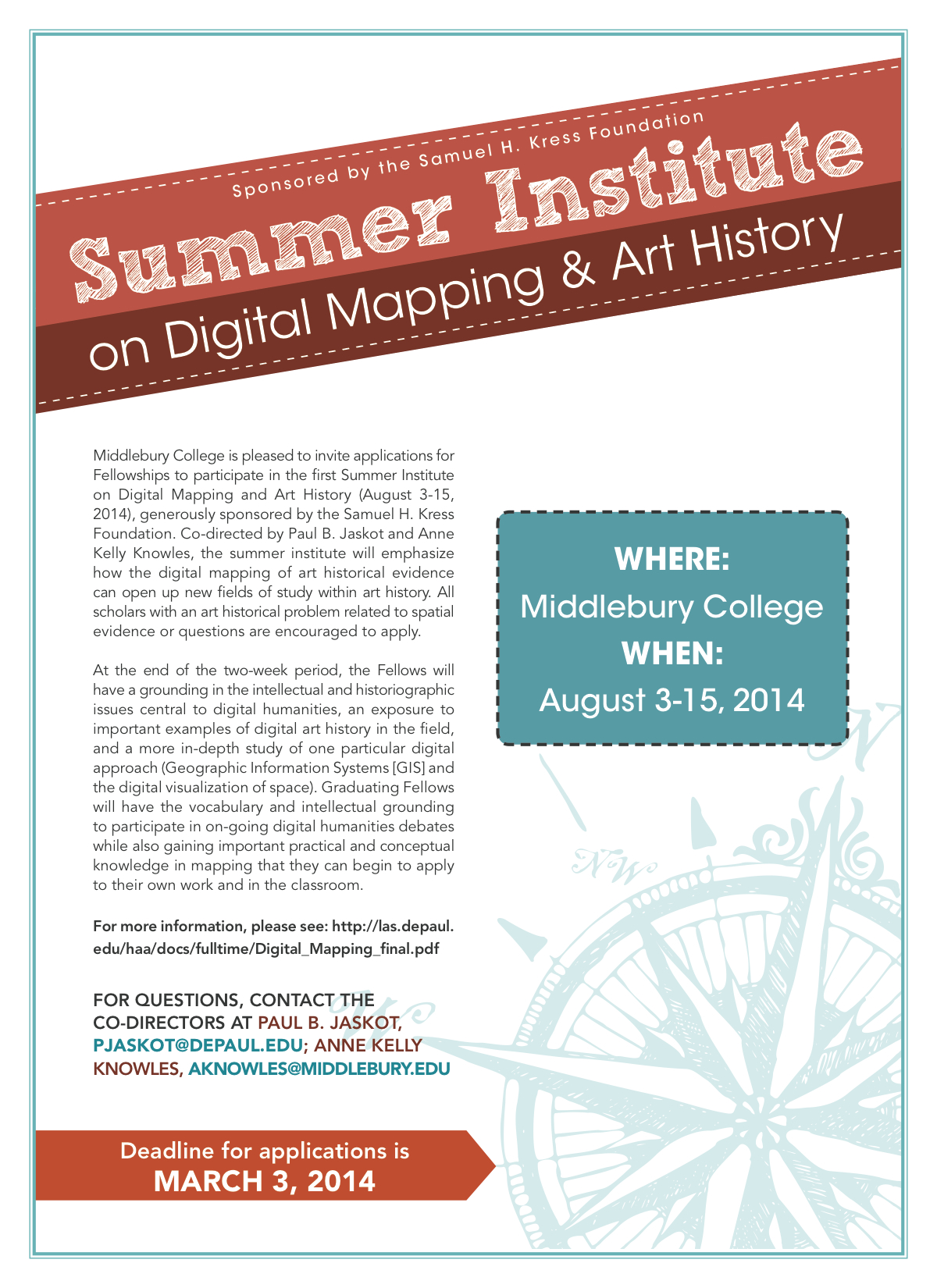Present: Kirsten Atagus, Sheila Beonde, Betty Leigh Hutchenson, Dene Grigar, Emily Pugh, Gail Feigenbaum, Alexandra Oliver
Introduction: Kirsten is working collaboratively with a computer scienctist to develop a model for tracking patterns of celestial/solar movements in relation to a particular architectural site. Her question: how to publish this work in a way that accurately represents the data and can be recognized as legitimate research?
Questions:
- Desktop v. online?
- Visualizations v. narrative text description?
- Is it important to be able to separate the data from the platform?
- Is the goal to arrive at some kind of stable form or distribute the data, material, components across materials across several databases or platforms?
- Are we limited by the notion of “publish” (what is “digital publishing”? Is it wider?)
Awesome points people made:
- don’t be too apologetic about doing DH projects – there’s value in asserting the value of digital work
- frame the projects in a way that tenure committees or other gatekeepers can understand (if not “research”, then perhaps public intellectual contributions, pedagogy)
- books are outmoded because they fail to take advantage of the multiplicity and sophistication of new presentation tools
- “publication” may not be the best way to think about digital presentation
- archival preservation of data may be different from publication
- still and moving images are now a reality of several kinds of publication, but sound, smell and touch are still a way off
To dos (in no particular order):
- match technological platforms for publication with different audiences
- rewrite tenure promotion guidelines to recognize new products
- preserve what we like about the book – and discard the rest
- change not just technology, but academic culture
- develop guidelines for peer review (NEH and others have already been doing this)
- pedigreeing rather than publishing: consider alterantive ways of identifying the value of DH work: not just peer review, but number of downloads, page views, screenings, prizes…
Upcoming: Emily Pugh’s organizing a panel for CCA 2015 on these issues – get in touch if you’re interested!
More: Kirsten noted and uploaded all the publications and resources discussed during this panel!




